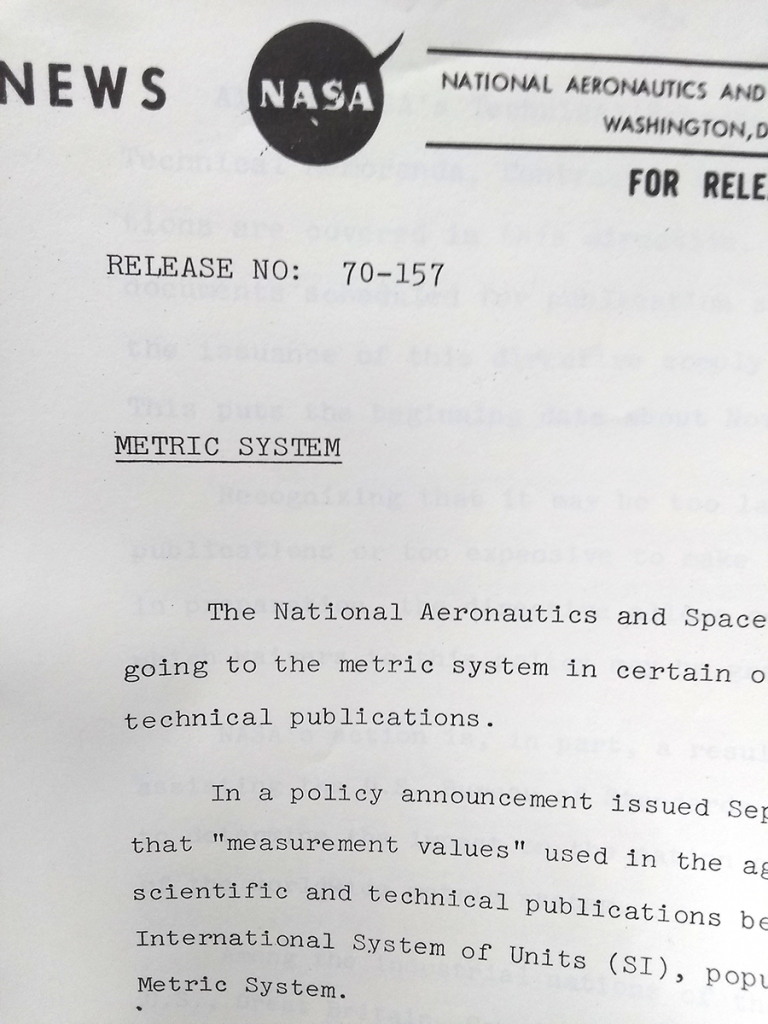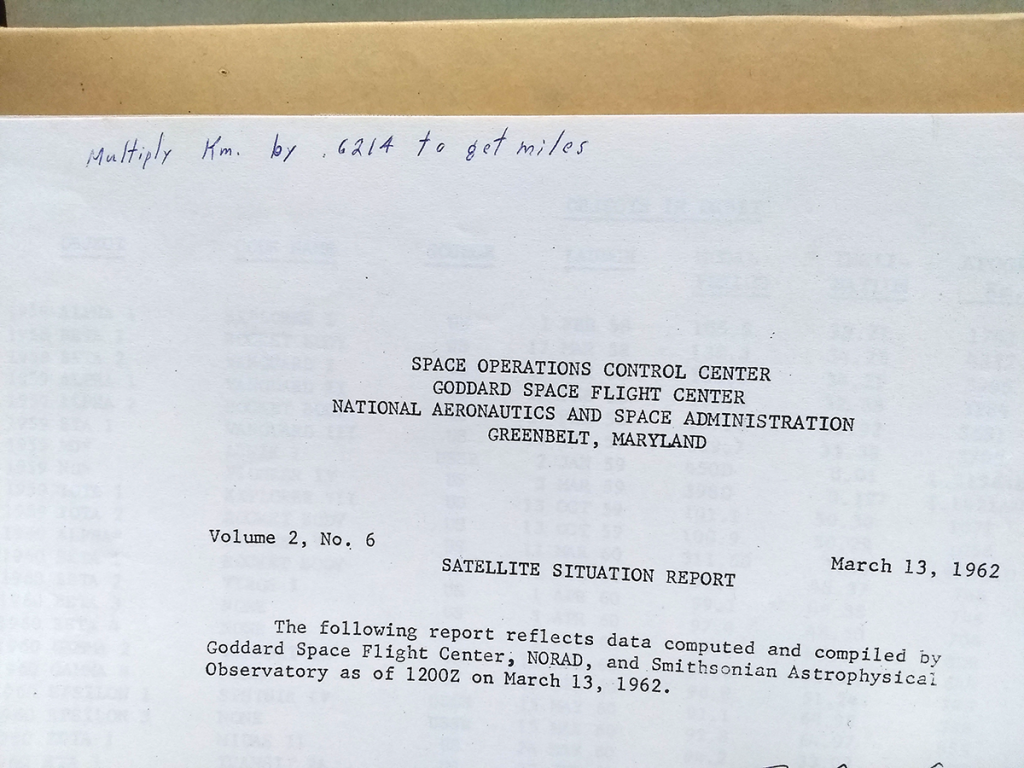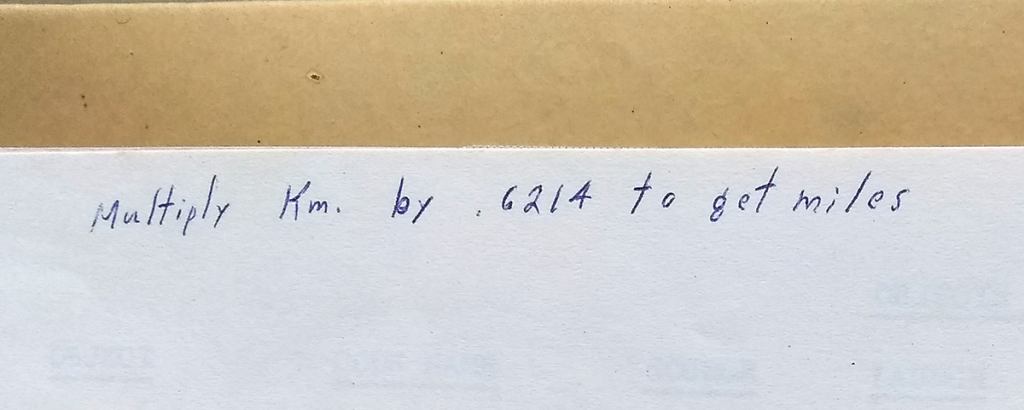
NASA makes an effort to switch over to the metric system. (For some things.) Because when your day-to-day job involves a lot of calculations and unit conversions, decimal-based order takes a lot of irritation out of doing ordinary stuff.

Of course, when you make the changeover from one system to another, it’s a challenge. Sometimes it’s necessary to use a few crutches before the comfort and ease settle in. (Note that this particular sheet predates the press release by the better part of a decade.)

Odd observations:
- It’s written out in plain English, rather than as a symbolic equation, like ” 1 km = 0.6214 mi. “
- There’s no 0 before the decimal point.
- The k for kilo is capitalized, and there’s a period after the m.
- But there’s no period at the end of the actual sentence.
- Love that old-school printed g.